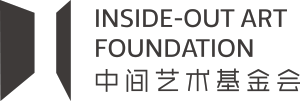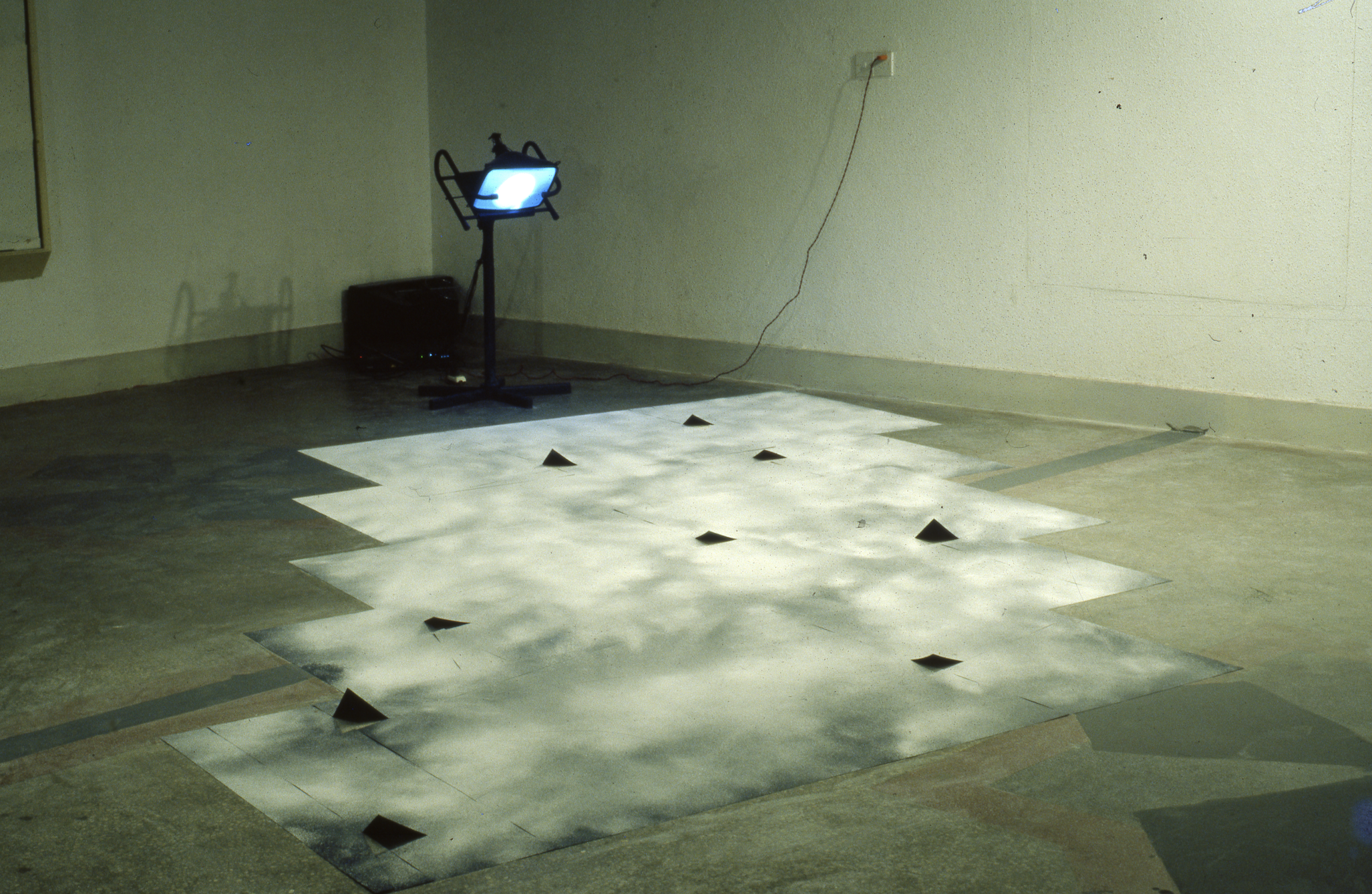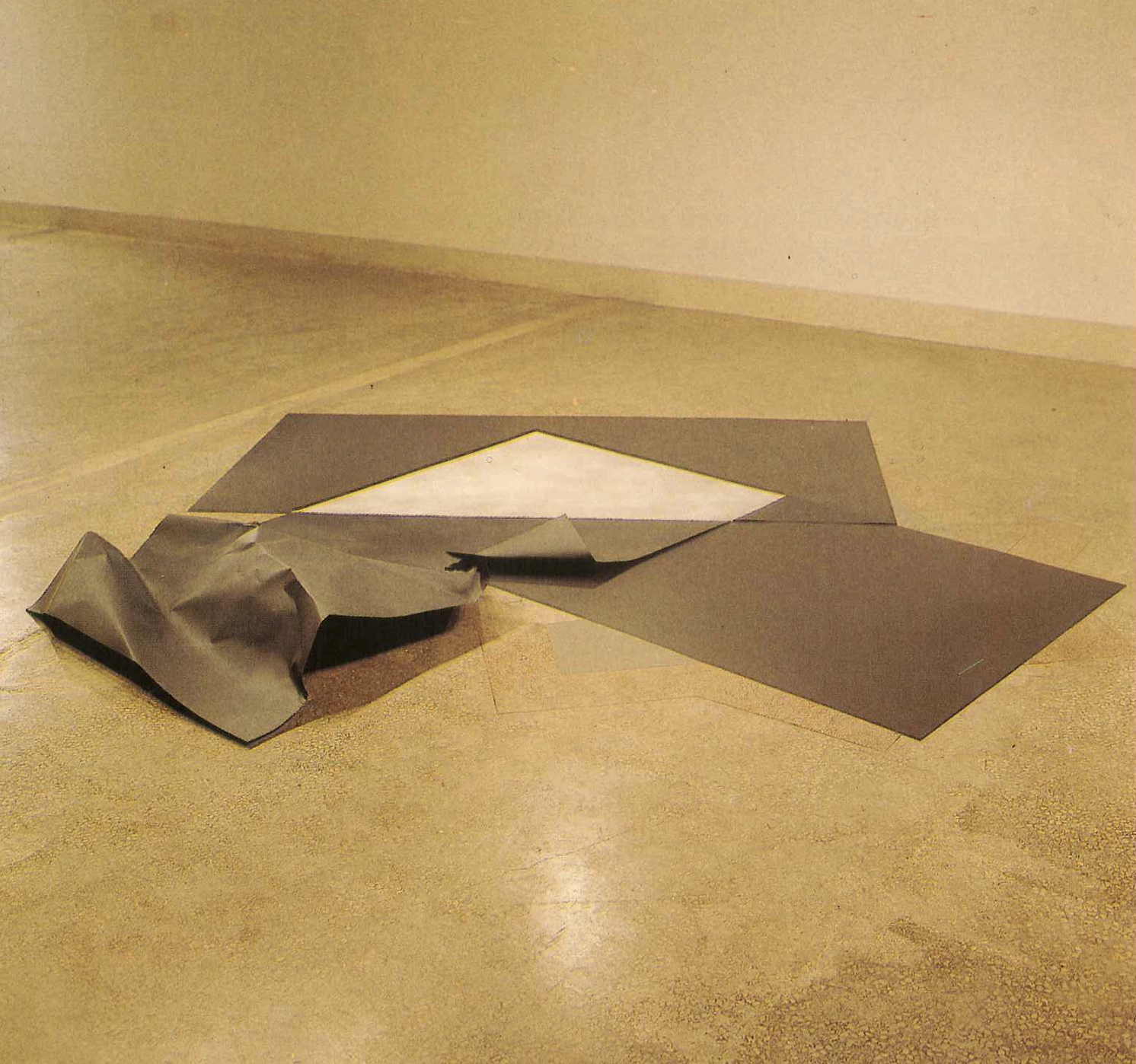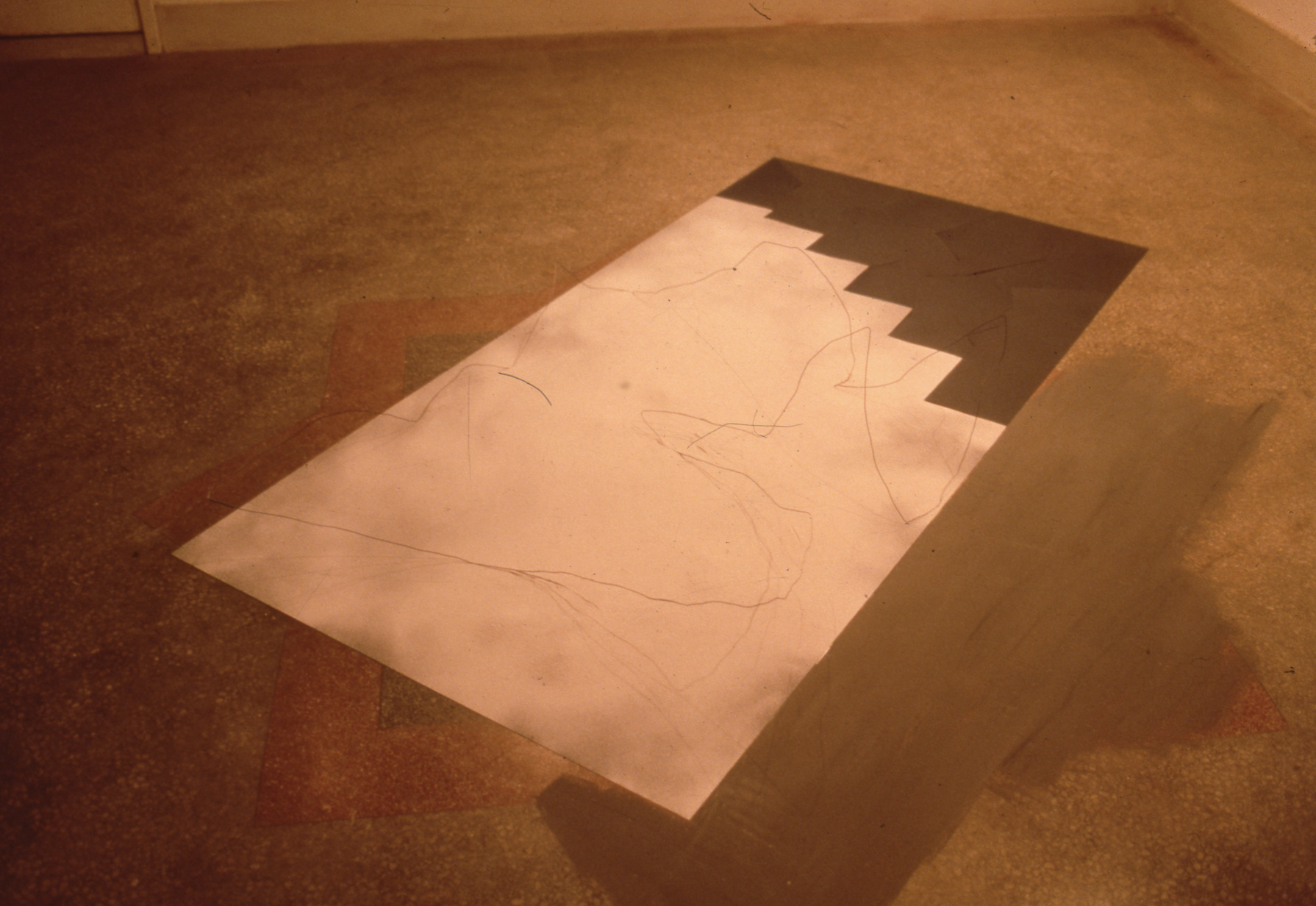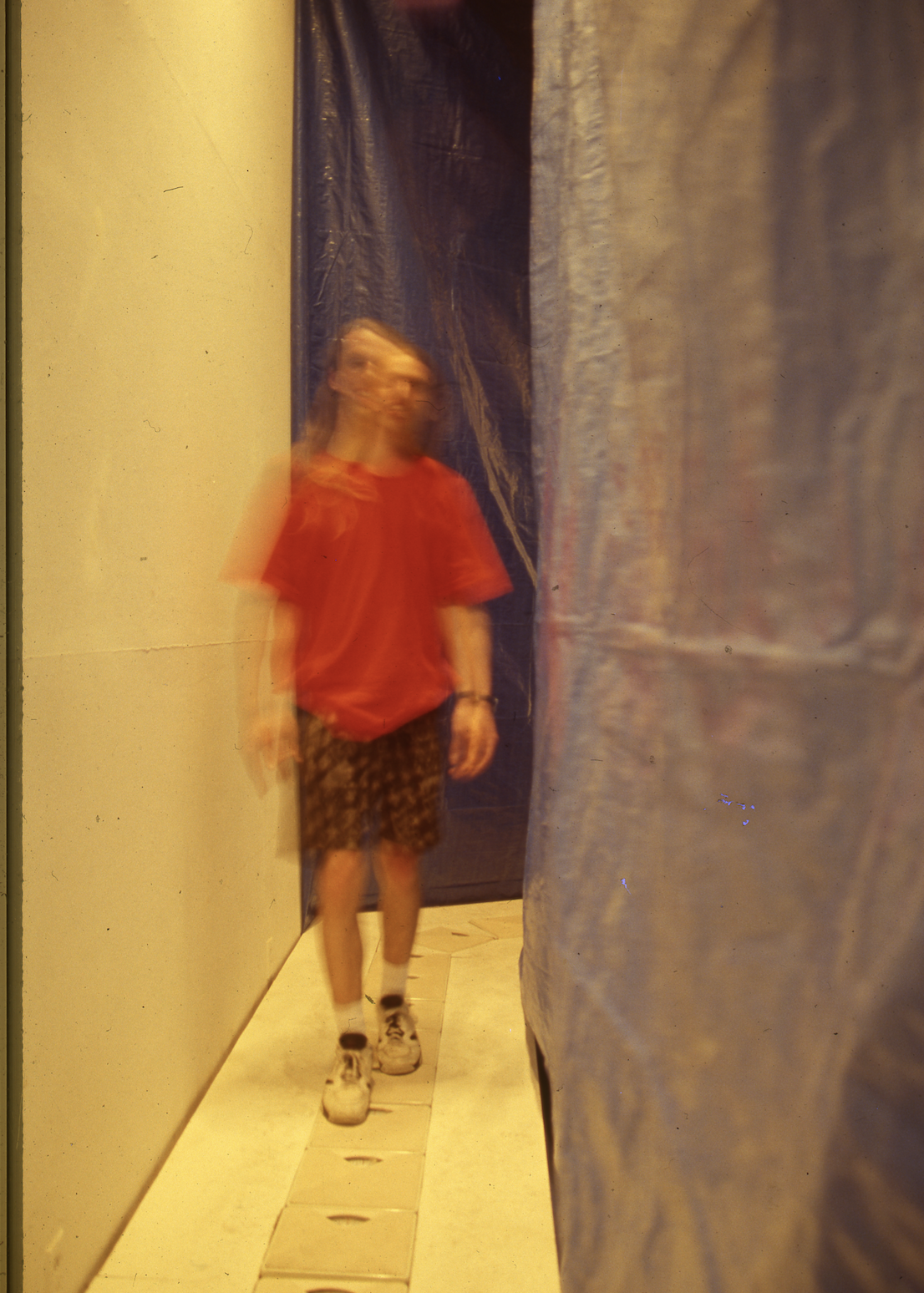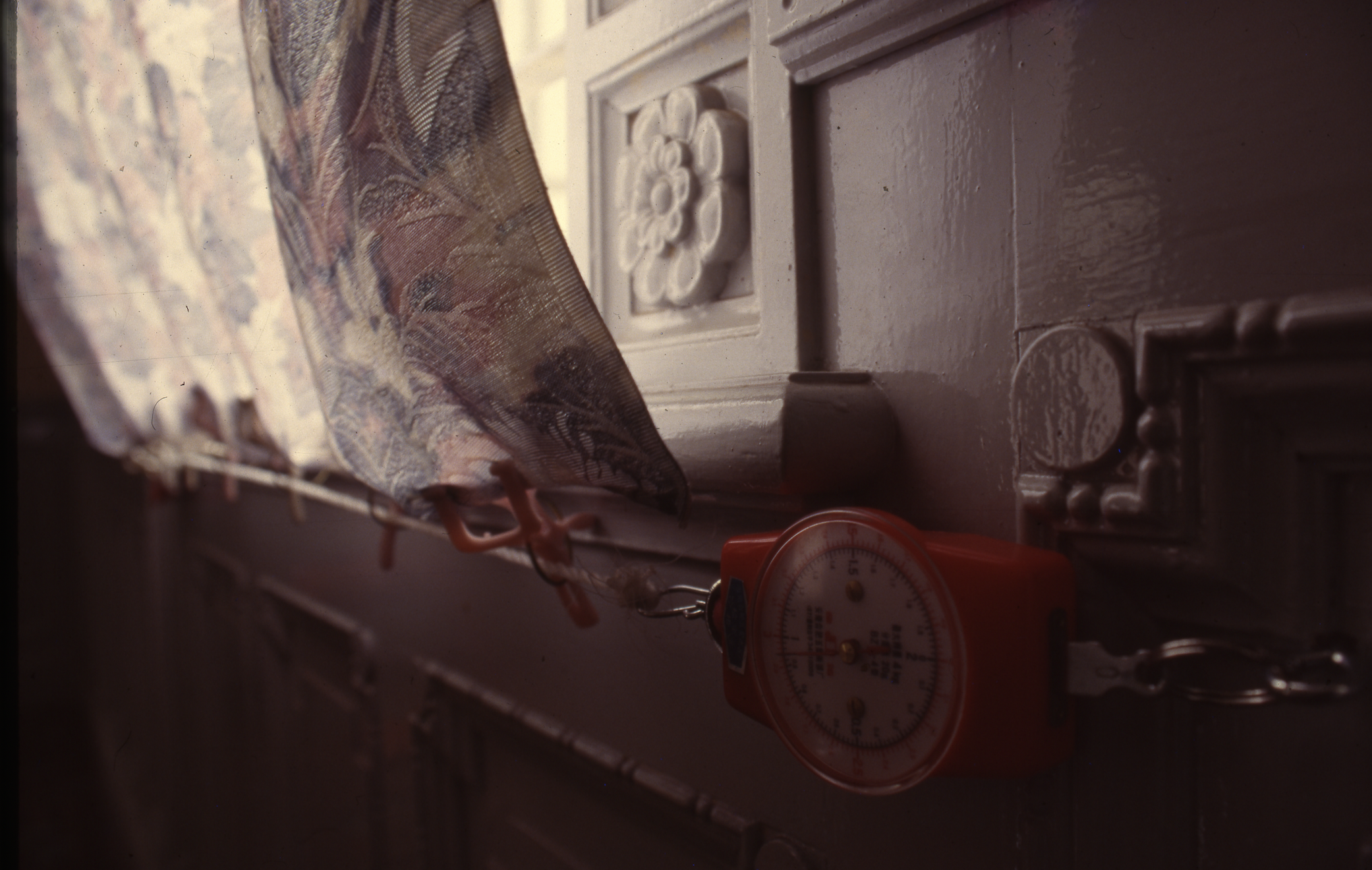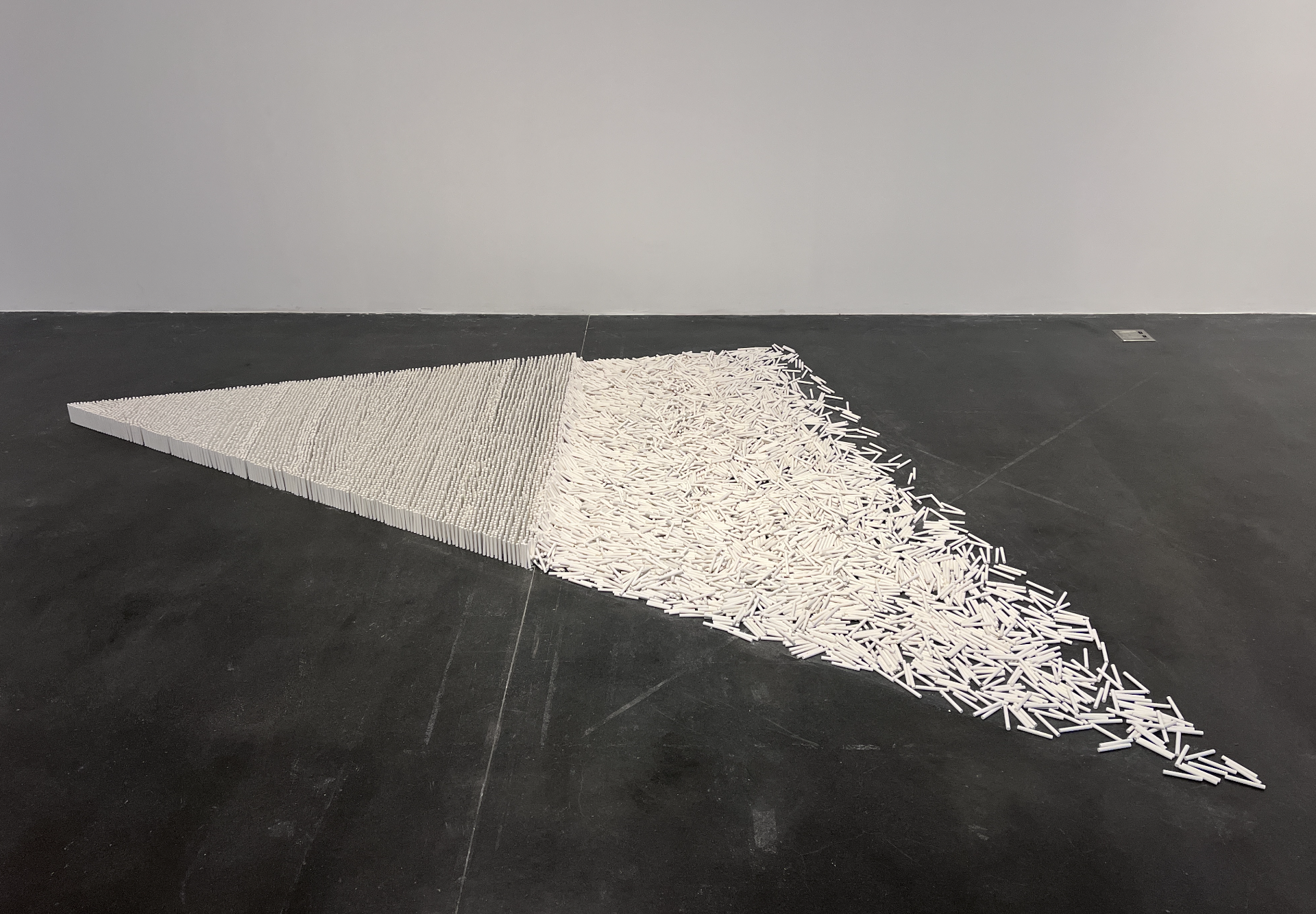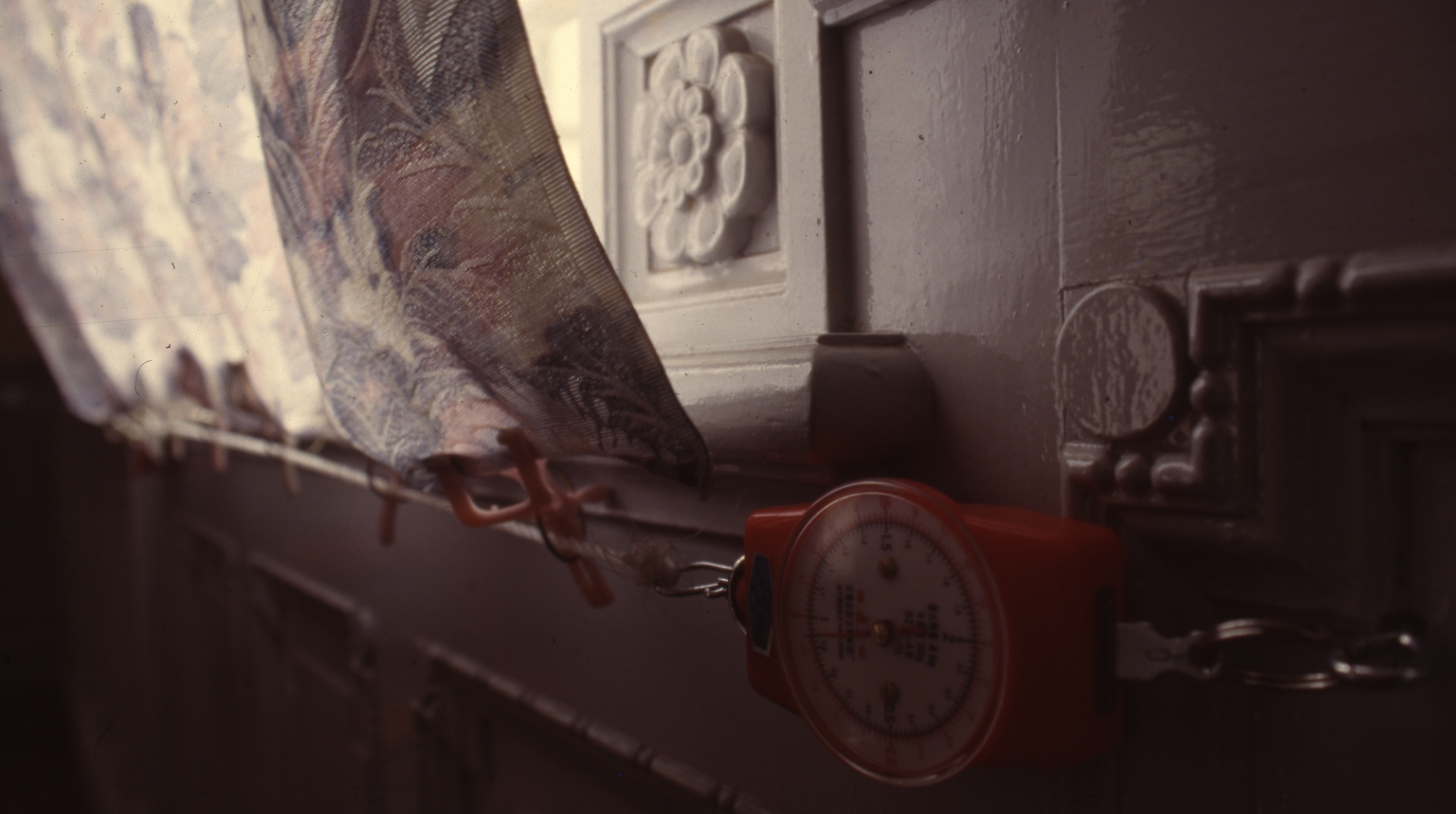
After being denied university admission due to a congenital heart condition, Qian Weikang spent over five years (1982-1987) working as a boiler worker at Shanghai’s Dalong Machine Factory. During this period, he immersed himself in literary societies, modernist poetry, radical writing, and was introduced to avant-garde art and modernist thought through literature. A voracious reader, Qian was deeply influenced by European literature, particularly by its modernist and avant-garde movements. In 1990, within the confines of his 20-square-meter apartment on the outskirts of Shanghai, Qian embarked on an experimental literary journey, creating what he termed “ladder poems.” Engrossed in poetry and art criticism, Qian sought a radical approach to literary writing. He drew lines on his room’s floor with chalk, like those in an exercise book, and randomly selected over 100 words from the Modern Chinese Dictionary. Each word was written on a separate piece of paper. Climbing a folding wooden ladder, he dropped these papers from a height, allowing them to scatter randomly. The words, where they landed, were then transcribed into a notebook, forming automated poems. These were not conventional sentences, but Qian was fascinated by this “destruction of words,” a process resembling “free writing” and partly inspired by Samuel Beckett and the art of happenings, with their anti-logical narrative. As Qian shifted towards visual artistry, his Ladder Poem experiment waned. However, the principles of self-imposed rules and restraint persisted in his work from 1993 to 1996, where he developed artworks that utilized measurement tools to objectively quantify emotions, experiences, and the subjective process of creation. His visual art debut was an installation tailored to the exhibition space, comprising nearly 30,000 pieces of white school chalk. He arranged half of these chalks standing on the ground, while the other half appeared scattered, forming a triangular shape (One Divided into Two is Still Not Enough, 1993).
Later, Qian transitioned to working with standard iron sheets (100 x 200 cm), influenced by his boiler factory experience and his exposure to artist Richard Serra. He spray-painted these sheets dark blue, arranged them into neat forms, and from a ladder, sifted a calculated amount of plaster dust onto some sheets. “The use of plaster powder was dictated by the needs of the designated area and measured with a balance scale of limited precision. The titles could only be fully determined once the work was completed on-site; in other words, they represent a data-based statement of measurements. This approach, akin to a method in physics, is simply an attitude towards engaging with objects.” These works, inherently poetic, spoke of invisible forces and connections with a serene elegance. Qian’s work consistently employed “measurement” as a narrative tool, using numbers to articulate his worldview. Over this intense period, his work showcased a flexible yet controlled expression, constantly probing the freedom of the subject from philosophical constraints of inherent notions and empirical control.
Qian’s artistic endeavors, which involve “surrendering” himself and the outcomes of his actions to external elements like gravity, wind, rules, and quantitative relationships, are highly symbolic. This approach unveils an inherent paradox in his philosophy: the act of self-imposition of constraints necessitates an elevated level of self-awareness. This dichotomy lies in an unspoken truth – that the artist, while appearing to cede control, maintains mastery over his own thoughts and actions. By deliberately placing himself in situations that seem beyond control, Qian paradoxically demonstrates a transcendent state that navigates the realm of thought.
“Conceptualism and 1990s” Series
Beijing Inside-Out Art Museum has been revisiting the historical landscape of Chinese contemporary art since 2017. By focusing on specific historical periods or individual artists, we seek to explore ideological impetus behind evolution of creation and individual careers, uncover interaction between them and their times, and illustrate the complexity and richness of both historical and personal narratives. Solo exhibitions, Analysis: New Measurement, from 1988 to 1995 and Stipulated Amount and Free Fall: Qian Weikang, from 1990 to 1996, serve as significant art historical case studies. New Measurement Group is comprised of Beijing artists Wang Luyan, Chen Shaoping, and Gu Dexin (ordered by numbers of surname’s stroke), and Qian Weikang was born and based in Shanghai. Their conceptual creation during that brief period attracted certain attention and aroused discussion, with long-lasting impact. Both of them wrapped up their artistic endeavors in late 1995 and 1996 respectively. As a result, awareness and understanding of their work became largely restricted to artists and critics of that era. Destruction or loss of most of their artworks and documents after they ceased their practices has hindered subsequent generations from fully grasping and valuing their work. This deficiency significantly contributes to the obscurity surrounding emergence of conceptual art in the early 1990s within contemporary art history.
Artists
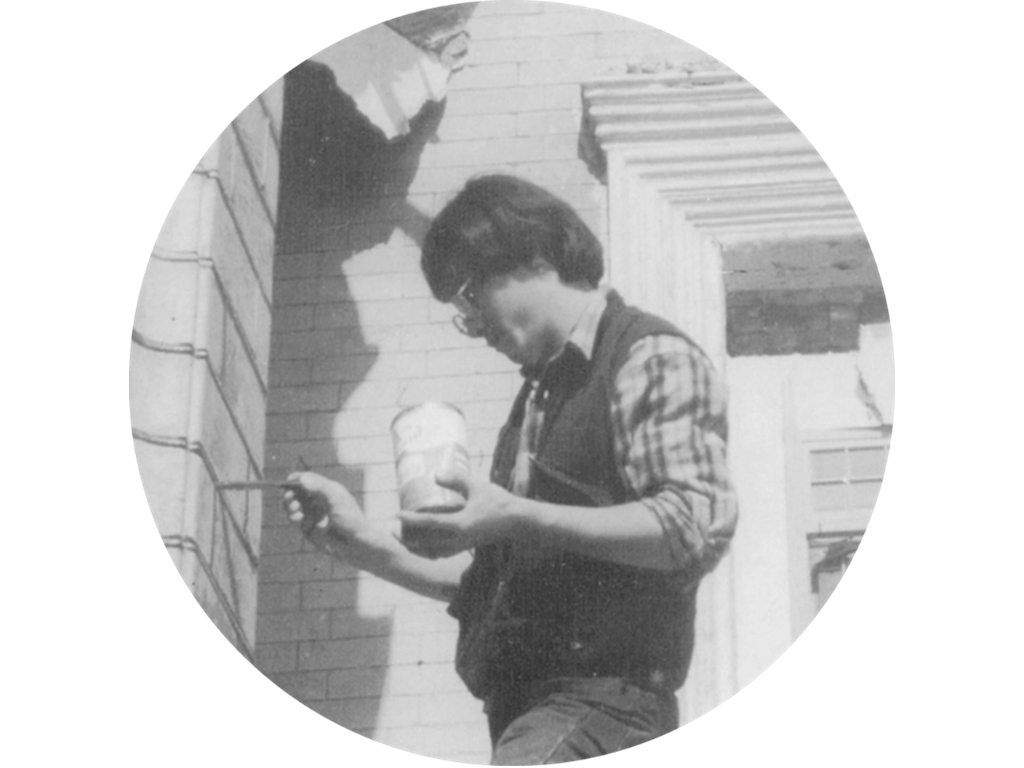
Qian Weikang
Born in 1963, Qian Weikang worked the furnaces at the Shanghai Dalong Machinery Factory from 1982 to 1987. During this time, he took part in literary community groups, where he grew fond of modernist poetry and radical compositions. It was through literature that he first encountered avant-garde art and modernist ideas. After 1989, his interactions with artists increased, and he began his own attempts at artistic creation. At the October Experimental Art Exhibition in 1993, he released his first artwork, made with chalk. Before this, he had been creating art with chalk in his home for over a year. As he saw it, “Material does not always exist within the social ideological hierarchy. It is free, light and reliable.”
Curator

Liu Ding
Liu Ding is a Beijing-based artist and curator. Liu Ding’s artistic creation and curatorial practice bring attention to multiple viewpoints and modes of description in Chinese art history, exploring a trajectory of discursive thoughts that connect the contemporary and the historical. He has participated in international biennials such as: Busan Biennale (2018), Yinchuan Biennale (2018), Istanbul Biennial (2015); Asia Pacific Triennial, Brisbane (2015); Shanghai Biennale (2014); Prospect 3 New Orleans (2014); Taipei Biennial, (2012); Chinese Pavilion, 53rd Venice Biennial (2009); Media City Seoul (2008); and Guangzhou Triennial (2005). His work has been shown and collected by numerous major art institutions around the world.
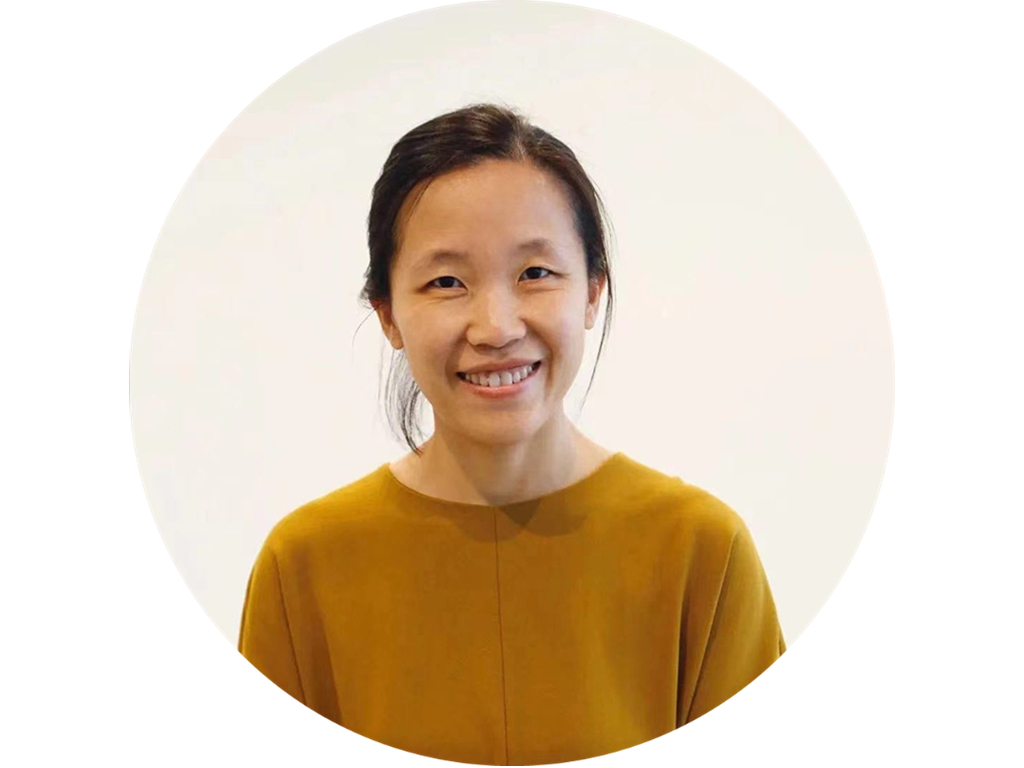
Carol Yinghua Lu
Carol Yinghua Lu is a PhD scholar at the University of Melbourne and director of the Beijing Inside-Out Art Museum. She is a contributing editor at Frieze. Lu was on the jury for the Golden Lion Award at the 2011 Venice Biennale and on the jury for the Filipino National Pavilion of 2018 Venice Biennale of Architecture. She was the co-artistic director of the 2012 Gwangju Biennale and co-curator of the 7th Shenzhen Sculpture Biennale in 2012. From 2012 to 2015, she was the artistic director and chief curator of OCAT Shenzhen. She was the first visiting fellow in the Asia-Pacific Fellowship program at the Tate Research Centre in 2013. She is one of the first four ARIAH (Association of Research Institute in Art History) East Asia Fellows 2017 at Bard Graduate Center. In 2019, she was on the jury for the Tokyo Contemporary Art Award, Hugo Boss Asia and Rolex Mentor and Protégé Arts Initiative.
Exhibition Photos
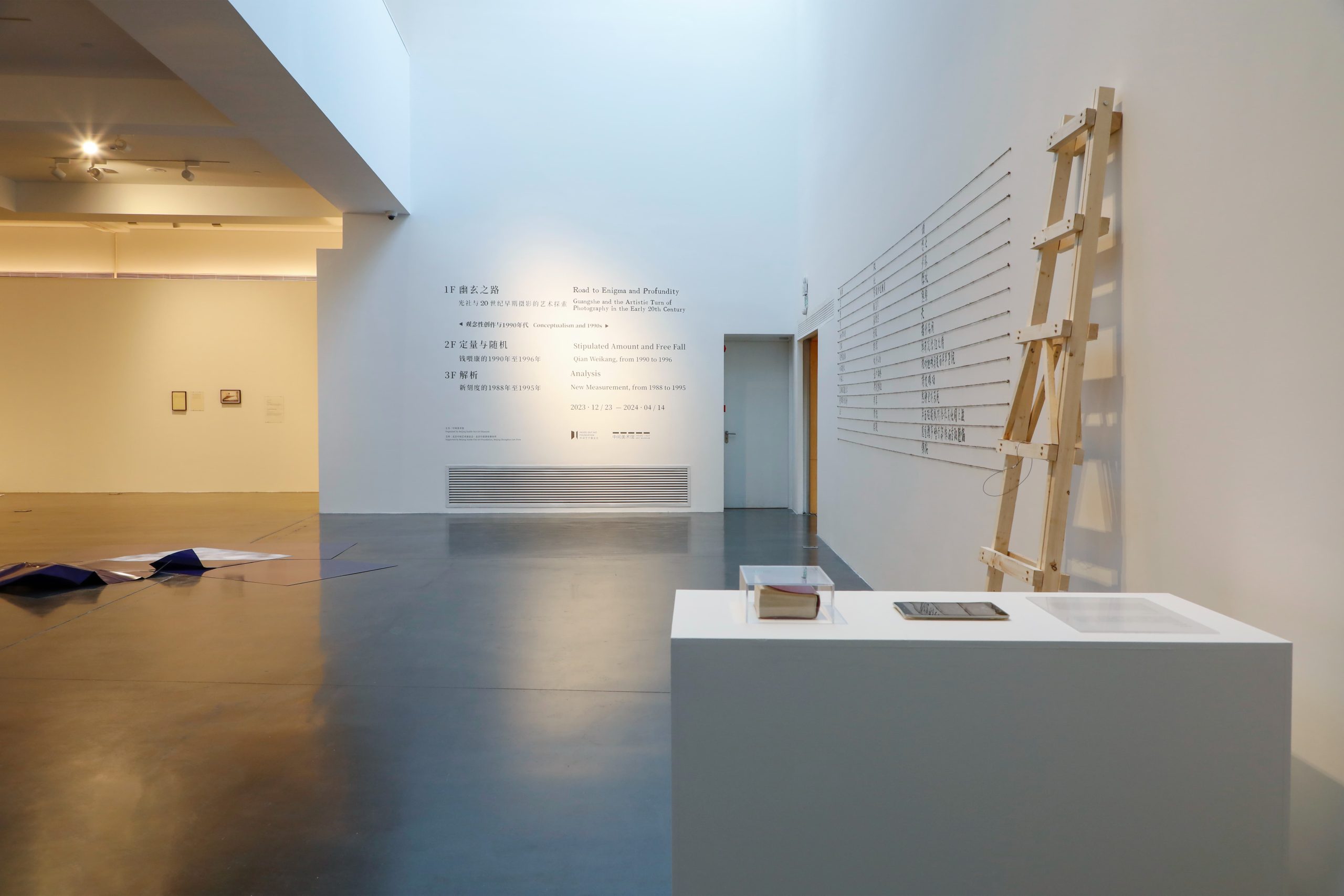

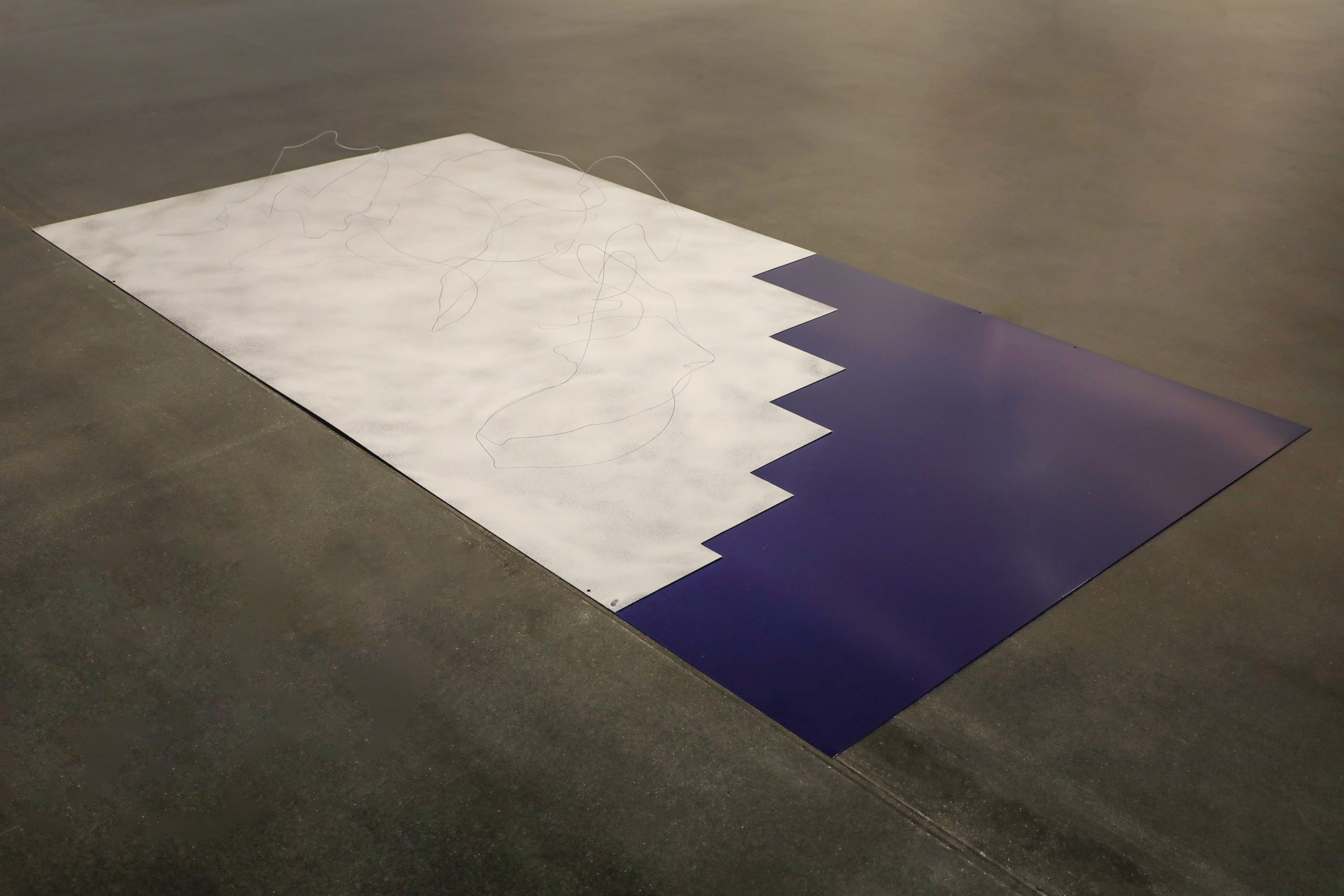


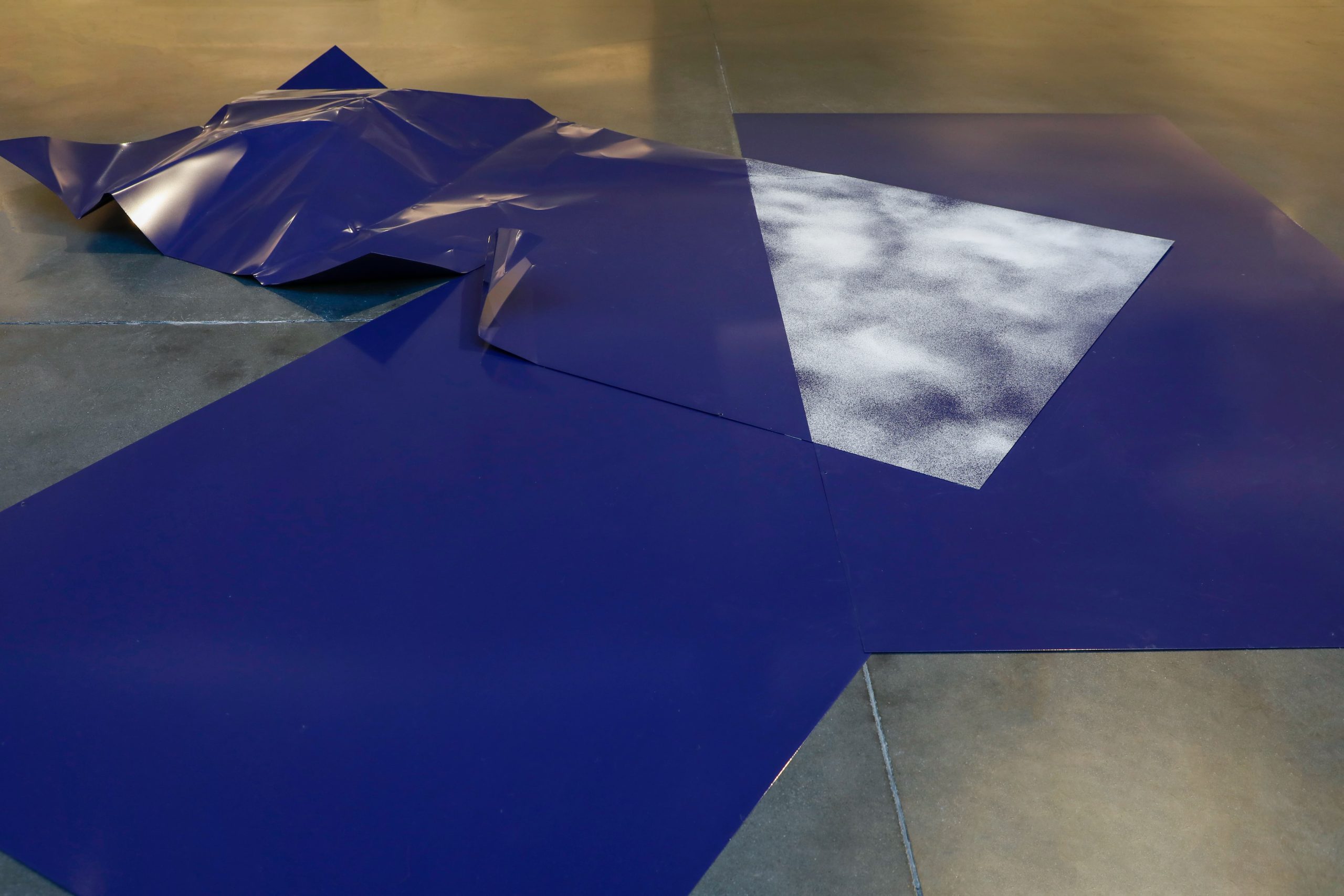
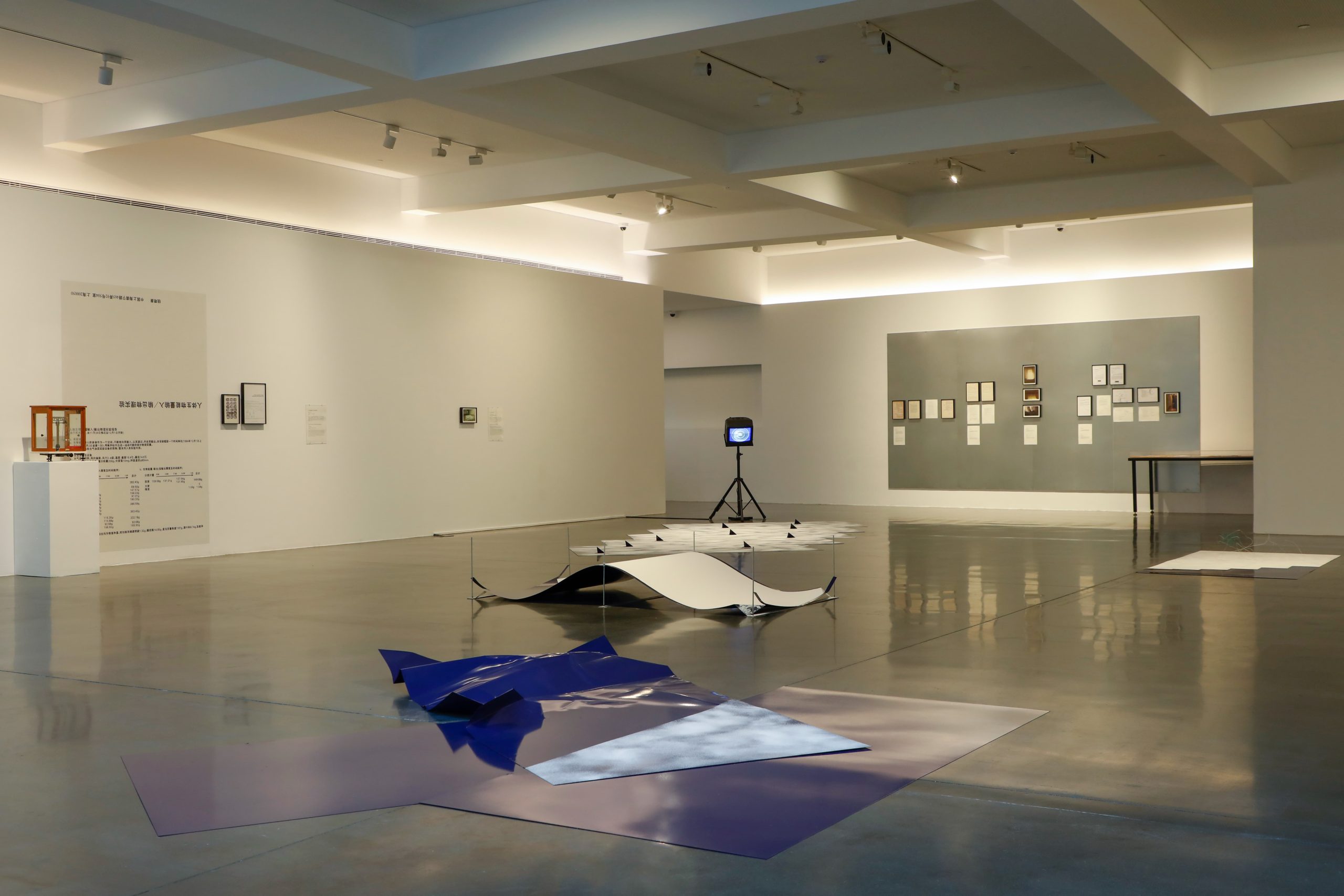
View the Exhibition Online
Exhibition Brochure
An electronic version of the exhibition brochure is available for viewing. Click here to download
Exhibition Guide
Exhibition Date
April 29th to July 30th, 2023
Exhibition Time
Wed.-Fri. 11:00-18:00
Sat.-Sun. 10:00-18:00
Last Entry
17:30
Exhibition Location
Beijing Inside-Out Art Museum, No.50 Xingshikou Road, Haidian District, Beijing
Ticket Price
Regular Ticket: 20 RMB per person
Concession: 10 RMB per person
Concessions applied to the following audience members:
Students and teachers, with student ID and teacher ID.
Language
Chinese, English, Italian
Barrier-free Access
We provide barrier-free access. Please make an appointment by telephone in advance. Tel: (010) 62730230
Sponsors
